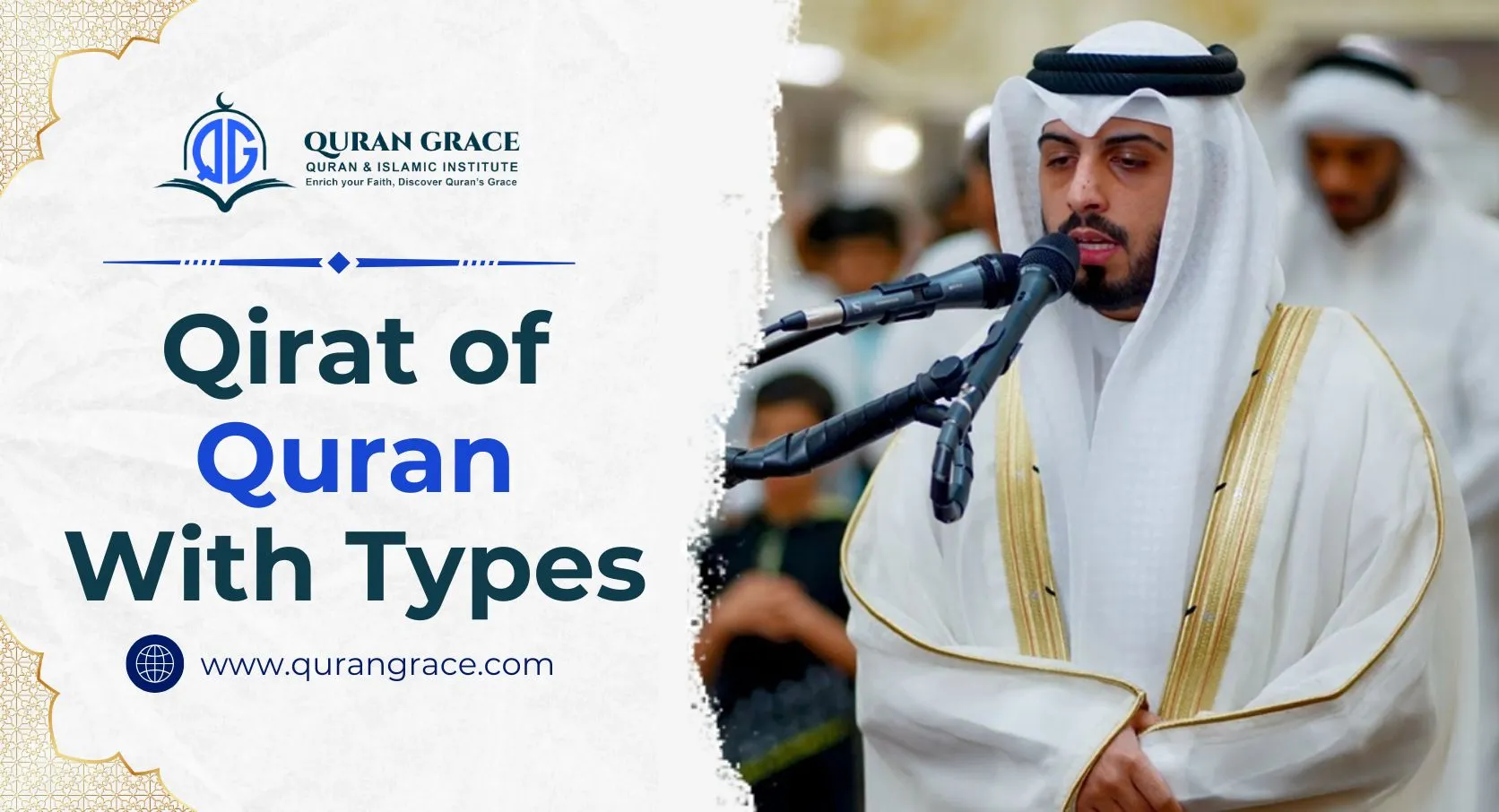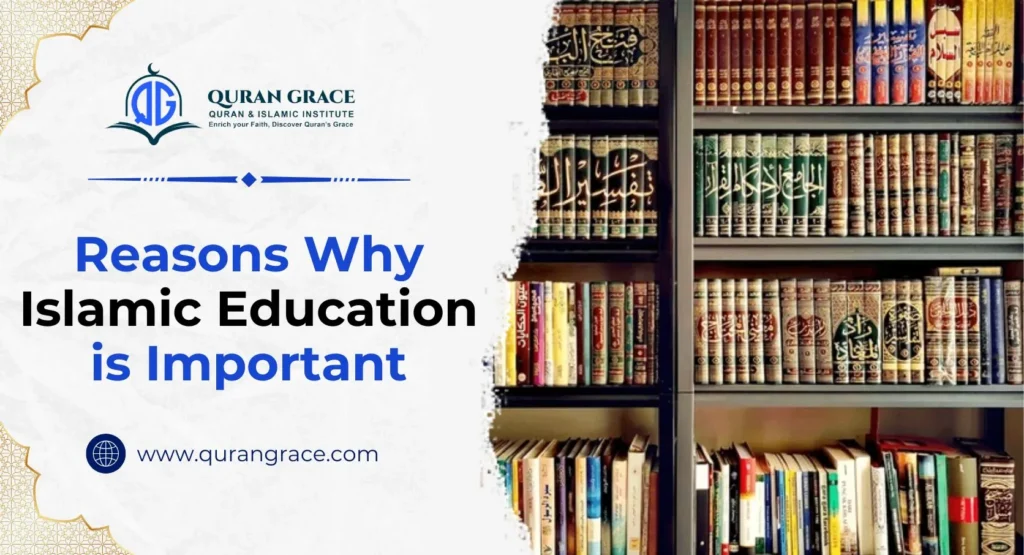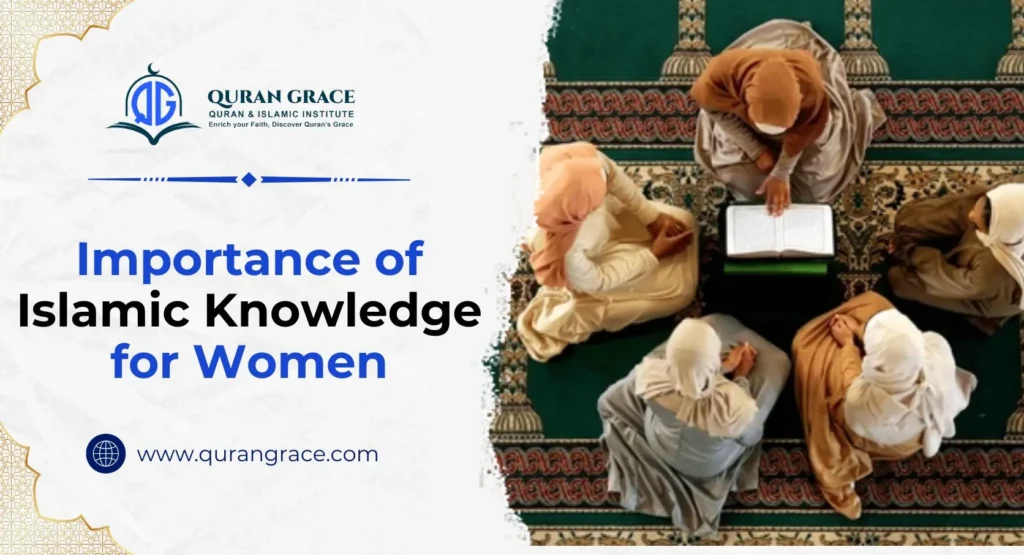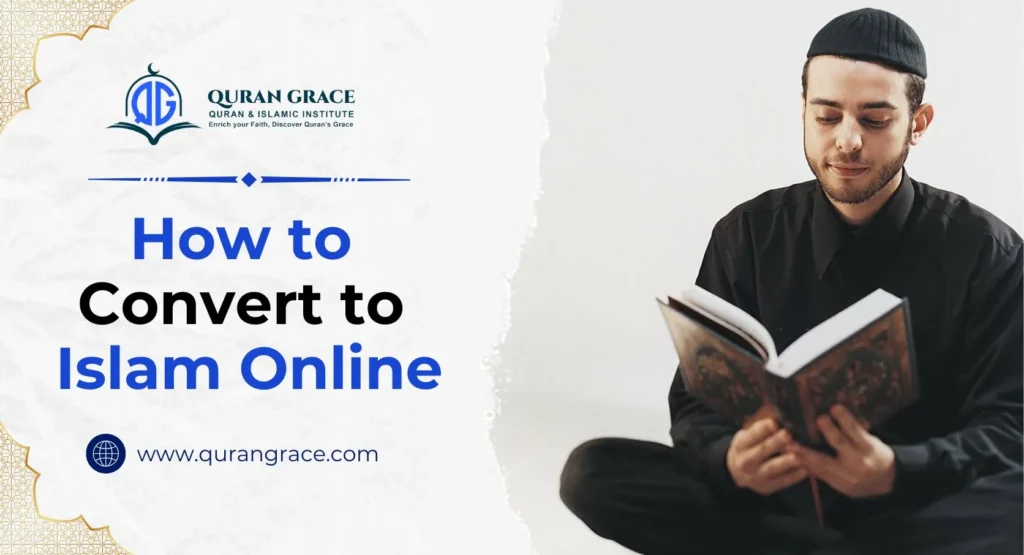Qirat in Islam signifies the various methods of reciting the Quran. There are seven recognized authentic types of Qirat, each distinguished by specific rules of quran recitation and variations in language and pronunciation. The study of these recitation styles pertains to an Islamic discipline that focuses on the proper conduct of reciting the Quran. Thus, Qirat represents the vocalization of the Quran, which is upheld and preserved through these distinct styles of recitation.
Table of Contents
ToggleMeaning of Qirat of Quran
The term “Qirat” (قرات) originates from the Arabic dialect and is derived from the word “Qirah” (قراءة), which translates to ‘reading.’ Qirat is described as the act of articulation and pronunciation of verses from the Quran. The term is closely associated with “Qari,” which refers to an individual who recites the Holy Quran. Thus, Qirat refers to the act of reading or reciting the Holy Quran.
What are Types of Qirat?
The diversity in Quranic recitation styles stems from historical and linguistic variations in the Arabic language, as well as the diverse contexts in which the Quran was revealed to Prophet Muhammad. However, these differences do not alter the Quran’s meaning but preserve its original form and accommodate linguistic nuances.
The types of Qira’t are the different ways the specialist chain holders recite the Quran. All Qira’t got their title from the popular Rawis, who described it with a verified chain. There are 10 types of Quran recitations. 7 types of quran recitation are mutawatir and link back to Prophet Muhammad PBUH; the other 3 are not considered as established as those 7 are.
7 Types of Qirat
The 7 authentic (mutawatir) types of recitation of the Quran were chosen by the prominent Quranic researcher within the field of Qira’t named Abu Bakr ibn Mujahid to recite quran beautifully.
1. Qira’t Naafi’ Al-Madani (Madinah)
Imam Malik (RA) and Imam Ahmad ibn Hanbal (RA) recounted the Heavenly Quran in this way for the most part. Qaloon and Warsh are the two Qaris who protected this recitation.
2. Qiraat Ibn Katheer Al-Makki (Makkah)
Qunbul, Al-Buzzi, and Imam Shafi presented the Quran in this way. Al-Buzzi and Qunbul are the two Qaris who protected this quran recitation.
3. Qiraat Abu Amr al-Basri (Basra)
Ad-Doori and As-Soosi are the two Qaris who protected this perusing way of the Sacred Quran.
4. Qira’t Ibn Aamir ash-Shami (Syria)
Ibn Dhakwan and Hisham are the two Qaris who recounted and protected this recitation of the Quran.
5. Qira’t Asim Al-Kufi (Kufa)
Imam Abu Hanifa (RA) and Imam Ahmad ibn Hanbal (RA) frequently presented the Quran in this way. The two Qaris who protected this recitation were Hafs and Shuba.
6. Qira’t Hamzah al-Kufi (Kufa)
The two popular Qaris who protected this perusing way are Khallad and Khalaf (who too has his claim Qira’t, i.e.,
7. Qirat Khalaf al-Bazzar). Qirat Al-Kisaa’i (Kufa)
Al-Layth and Ad-Doori are the two Qaris who protected this Quran recitation.
What is the Difference Between Qirat and Tilawat?
Tilawat: This term refers to the act of reading or reciting the Quran. It emphasizes the importance of deliberate reading, which includes proper pronunciation and an active effort to contemplate the meanings of the verses.
Qirat: This concept pertains to the various styles or modes of Quranic recitation that have been carefully preserved through generations via unbroken lines of transmission. Each style possesses unique characteristics, such as distinct pronunciation, specific pauses, and the elongation of letters, all of which enhance the richness and diversity of Quranic recitation.
Conclusion
Muslims are free to choose from various Qira’at styles, each with its own unique pronunciation and recitation patterns. The popularity of specific Qirat styles varies across regions, influenced by historical, cultural, and educational factors. The main aim must be to stay connected to the book of Allah. Enrolling in online qirat course with professional egyptian quran teachers can help to learn of each qirat style.








